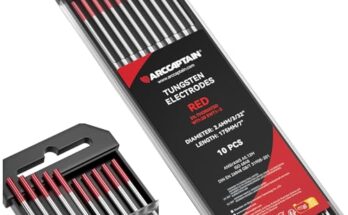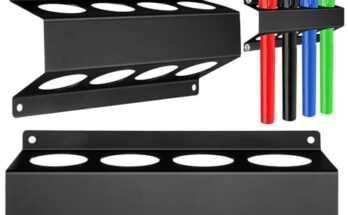If you’re wondering how to use a Lincoln MIG welder, you’re in the right place. I remember the first time I used one, standing in my garage, a little nervous but also excited. Lincoln welders have a great reputation in the welding world. They’re reliable, durable, and beginner-friendly.
If you’re just starting out or brushing up on your skills, I’ll walk you through it all — from setup to weld quality.

Let’s sit down and talk through it like I’m right there next to you in your shop. I’ll keep the language simple, explain everything clearly, and include everything I’ve learned from hands-on experience with Lincoln MIG machines.
What is a Lincoln MIG Welder?
A Lincoln MIG welder is a welding machine made by Lincoln Electric that uses the MIG (Metal Inert Gas) welding process.
This process is also known as GMAW (Gas Metal Arc Welding). It’s one of the easiest types of welding to learn and is perfect for welding mild steel, stainless steel, and even aluminum with the right setup.
Lincoln MIG welders come in different models — some are designed for light-duty home use while others are meant for heavy industrial work. What they all have in common is user-friendly design, consistent performance, and solid construction.
Why I Prefer Lincoln MIG Welders
Over the years, I’ve used different brands, but Lincoln MIG welders have a special place in my heart. Here’s why:
- Simple to Use – Controls are clearly labeled and easy to adjust.
- Durable – Built to last, even in tough shop environments.
- Versatile – Works well on thin or thick metals with different wire sizes.
- Reliable Arc – Stable arc, fewer spatters, smoother welds.
When you’re working on a project, the last thing you want is a finicky welder. Lincoln machines just get the job done, and they do it well.
Safety First – Things to Keep in Mind
Before you start welding, safety should always come first. This isn’t something to brush off. One mistake can cost you an eye, a burn, or worse. Here’s what I always check before I fire up my Lincoln MIG welder:
- Wear a proper auto-darkening welding helmet.
- Use welding gloves and a long-sleeve jacket.
- Make sure your area is well-ventilated.
- Keep a fire extinguisher nearby.
- Remove anything flammable from your welding area.
- Always check your cables and connections for damage.
Don’t skip any of these steps. Welding is fun and satisfying, but only if you do it safely.
Tools and Materials You’ll Need
Here’s a handy list of things you’ll need before starting:
| Tool/Material | Purpose |
|---|---|
| Lincoln MIG welder | Main welding machine |
| Shielding gas (Argon/CO2 mix) | Protects weld from contaminants |
| MIG welding wire (ER70S-6) | Electrode that melts to form the weld |
| Welding helmet | Eye protection |
| Welding gloves | Hand protection |
| Wire brush or grinder | Prepares and cleans the metal |
| Ground clamp | Closes the electrical circuit |
| Spool of filler wire | Supplies the wire for the arc |
It might seem like a lot, but once you have these, you’ll be ready to weld just about anything.
Setting Up the Lincoln MIG Welder
Setting up your machine properly makes a big difference. This part might feel overwhelming at first, but it’s easier than you think.
Plug in and Power On
Start by plugging the welder into a power outlet. Depending on the model, it might require 110V or 220V. Always check the label on your welder or in the manual.
Connect the Ground Clamp
Attach the ground clamp to a clean, bare metal part of your work surface. Make sure it’s tight and solid. The weld won’t work without a good ground.
Install the Wire Spool
Open the welder’s side panel and install the spool of MIG wire onto the spindle. Feed the wire into the drive rolls and through the gun liner. Keep the wire straight and tension right — not too loose or tight.
Set Up Shielding Gas
Connect your gas cylinder (usually a mix of 75% Argon and 25% CO2) and tighten the regulator. Open the valve slowly and adjust the flow to around 20-25 CFH. You should hear a faint hiss when the gun trigger is pressed.
Choose the Right Settings
Now, this is where you really personalize your weld. Lincoln welders usually have a chart on the inside cover showing wire speed and voltage based on material thickness. Don’t guess — check the chart and match it to your metal.
Preparing the Metal for Welding
Clean metal welds better — that’s a rule I live by. Here’s how I prep my workpieces before welding:
- Use a wire brush or grinder to remove paint, rust, and dirt.
- Make sure the edges are smooth and fit together well.
- If it’s a thick joint, you might want to bevel the edges slightly for deeper penetration.
Proper prep equals stronger welds and less frustration later.
Getting Comfortable with the Gun
Now that you’re set up, let’s talk about holding the gun. Relax your grip, but stay firm. Keep the nozzle clean and at the right angle — usually about 15 degrees from vertical. Keep a steady hand and always drag, don’t push, unless specified otherwise.
Make sure the wire stick-out is about ⅜ of an inch from the nozzle. Too long or too short can ruin the arc quality.
Making Your First Weld
Here’s the fun part — making your first weld. This is how I usually guide someone who’s just getting started:
- Hold the gun close to the metal, about ¾ inch away.
- Angle the gun slightly and press the trigger to start the arc.
- Move slowly and steadily along the joint in a straight line or small “e” motion.
- Keep your eyes on the puddle, not the arc.
The sound should be like frying bacon — smooth and consistent. If it pops loudly or sputters, adjust your settings or wire feed speed.
Adjusting Wire Speed and Voltage
Sometimes your welds won’t look right. Don’t panic — small tweaks make a big difference.
- Too much wire speed? You’ll get a high, ropey weld.
- Too little wire speed? You’ll burn through or have a weak weld.
- Too much voltage? The puddle spreads too far and creates undercut.
- Too little voltage? You’ll get poor penetration and cold welds.
Trust your ears and eyes. You’ll know when it feels and sounds just right.
Practice on Scrap Metal
Before jumping into a real project, practice on some scrap. Try welding in different positions — flat, horizontal, vertical. Learn how your machine responds and how to fix mistakes.
Try different travel speeds and wire stick-outs. Play with heat and wire feed settings. Practice makes perfect, and every hour you spend here will save you headaches down the road.
Cleaning Up After Welding
Once your welds are done, clean off the slag (if any), inspect for gaps or holes, and grind down any rough edges if needed. Use a wire brush to give your weld a clean finish.
Don’t forget to turn off your welder and close the gas valve when you’re done. Store your cables neatly and inspect everything for wear.
Troubleshooting Common Issues
Here are a few things I’ve run into and how I solved them:
- Wire burns back to the tip – You’re too close or wire speed is too low.
- Weld looks like bird poop – Clean your metal better or adjust settings.
- Porosity in weld – Gas flow issue or draft in the shop.
- No arc at all – Check ground clamp and wire feed.
Keep calm. Troubleshooting is part of the process, and it’s how you learn.
Tips for Better MIG Welding with a Lincoln Machine
Here are some tips I always share with beginners:
- Listen to the arc — smooth sound means good settings.
- Don’t weld over dirty or painted surfaces.
- Keep your nozzle clean and change tips when worn.
- Use anti-spatter spray to keep things tidy.
- Take breaks — welding is tiring, and fatigue leads to mistakes.
Every welder gets better with time. Just keep practicing and don’t be too hard on yourself.
When to Use Flux-Core Wire
Sometimes, you might not have access to shielding gas. That’s when flux-core wire becomes useful. Lincoln MIG welders often support both. Flux-core doesn’t need a gas tank and works well outdoors.
It makes more spatter, but it’s great for thicker steel or windy conditions. I keep a spool around just in case.
Ideal Projects for Lincoln MIG Welders
You can tackle a lot of projects with a Lincoln MIG welder. Here are some good ones to try:
- Repairing metal gates or fences
- Building shop tables or carts
- Fixing car panels or exhaust systems
- Fabricating shelves or toolboxes
- Making small trailers or frames
Start small and work your way up. It’s satisfying to build something with your own hands and watch it hold up over time.
Regular Maintenance Tips
To keep your Lincoln MIG welder working smoothly, give it some TLC:
- Check your drive rolls and liner for dirt or wear.
- Clean out dust from inside the machine.
- Inspect cables and connections often.
- Replace contact tips when worn or burned out.
- Drain your gas line if you’re not using it for a while.
Routine checks help your machine last longer and perform better.
Conclusion
Using a Lincoln MIG welder isn’t complicated — it just takes some time, patience, and practice. I’ve come to trust these machines for their simplicity and strength. Whether you’re working in a garage or running a welding shop, a Lincoln MIG welder can be your best friend.
Start with the basics, get to know your machine, and take your time to practice. Keep your workspace clean, your metal prepped, and your mind focused. With every bead you lay, you’ll get better and more confident.
Welding is more than just melting metal — it’s a skill that opens doors to creativity, repairs, and craftsmanship. Once you get the hang of it, there’s no going back.
FAQs
What gas should I use for a Lincoln MIG welder?
A 75% Argon and 25% CO₂ mix is ideal for most mild steel welding. For aluminum, pure Argon is recommended.
Can I use a Lincoln MIG welder without gas?
Yes, you can use flux-core wire, which doesn’t require external shielding gas.
Why is my Lincoln MIG welder wire not feeding?
Check for kinks in the liner, worn-out drive rolls, or a loose spool. Also, ensure your tension settings are correct.
What’s the best wire size for beginners?
.030 inch solid wire is a good starting point for most light to medium welding tasks.
Why is my weld popping and spattering a lot?
Your wire speed might be too high, voltage too low, or your metal could be dirty.
Can I weld aluminum with my Lincoln MIG welder?
Yes, but you’ll need a spool gun and pure Argon gas for best results.







